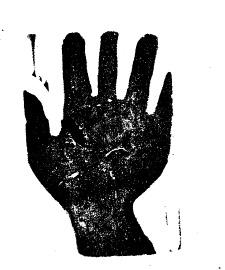GOAL: To have a legally enforced eight-hour workday for all workers, and, in the case of the textile workers, a 30–50 percent wage increase.
SUCCESS IN ACHIEVING SPECIFIC DEMANDS: 2 out of 6 points
SURVIVAL: 1 / 1
GROWTH: 3 / 3
Male textile factory workers at El Inca factory in Lima, Peru, walked off the job in December 1918 to protest against the effects of a law that enacted an eight-hour workday requirement for women and children. The law was intended to protect the rights of children and particularly women labourers, but instead dissolved the set-up within the factories, slowing production and preventing the remaining male workers from meeting their quotas. The male workers did not want to withdraw support from a law that benefited their female co-workers, so after the first spontaneous walkouts, the workers decided that the legally required eight-hour workday needed to be extended to all workers.
After a few days of deliberation, on 16 December 1918, the workers sent their demands that ‘both satisfied the male textile operatives’ concrete need to protect their incomes, and fit the broader agenda of their anarchist leaders’ to the factory owners.
The men asked for an eight-hour day for all workers and a 30–50 percent increase in wages to account for the shorter workday.
The factory owners framed these demands as unreasonable by obscuring the reason for the wage increase and workday regulation, which the workers called for to maintain their living wage. The owners made public statements accusing the workers of asking for disproportionate benefits. Thus the public was unsympathetic to the workers’ demands.
Workers at Vitarte and El Inca factories in Lima called for strikes to achieve an eight-hour day on 20 December 1918.
Workers at other factories also began to strike throughout the next weeks.
In the next 10 days, textile workers from La Victoria, La Union, and El Progreso factories struck for the eight-hour day and workers organised a general committee to regulate the strikes. Members of the Federacion de Obreros Panaderos ‘Estrella del Peru’ (the ‘Star of Peru’ Bakery Workers’ Federation) struck on 30 December. A delegation of agricultural workers from Huacho came to Lima to show solidarity with the strikes.
The strike committee appealed to the Students Federation for support, asking to use their headquarters as a meeting space and inviting students to be delegates on the committee.
The Federation’s president, Felipe Chueca, promised that the students would give their full support to the strikers. On 6 January, the strike committee was renamed the Comité Pro-Paro General (Committee for a General Strike).
Three students, Victor Raúl Haya de la Torre, Bruno Bueno de la Fuente and Valentín Quesada, joined the strike committee as delegates and sat in on the first meeting held in the headquarters on 7 January 1919. Workers from various disciplines attended the meeting, including bakers, leather workers, millers, shoemakers, and more.
The committee sent out letters to other unions, entreating them to join the strike, which workers in many cities did. Members of the Asamblea de Sociedades Unidas (Assembly of United Societies) passed a resolution supporting the strike on 10 January. The police shut down the Student Federation building on 12 January, so the Comité Pro-Paro General met in secret in a mutual aid society building.
At this meeting, the members of the committee declared a 48-hour general strike, to begin the next day.
On 13 January, workers arrived at their respective workplaces and found ‘well-organised militants’ outside, urging them to strike. People also picketed the main commercial centre of Lima, encouraging businesses to shut down and join the strike. Lima was effectively shut down on the first day of the strike.
Workers continued their strike through 15 January, when Manuel A Vinelli, the federal minister of development, met with the Comité Pro-Paro General and its student allies and was convinced to support the demand for an eight-hour working day. Vinelli then convinced the president, José Simón Pardo y Barreda, to issue a decree instating this policy for all of Peru. The members of the Comité Pro-Paro General called off the strike in response.
The workers were successful overall: they organised and struck to demand an eight-hour working day for all workers. However, wage increases were not gained universally; the issue was left to be determined by further consideration in the Peruvian congress.
This campaign’s outcome was influenced by the sensationalist media coverage of strikes by Argentinian workers and the ensuing violence in Buenos Aires. President Pardo and many other Peruvian elites were afraid of the same thing happening in Lima and so were more responsive to the strikers’ demands.


